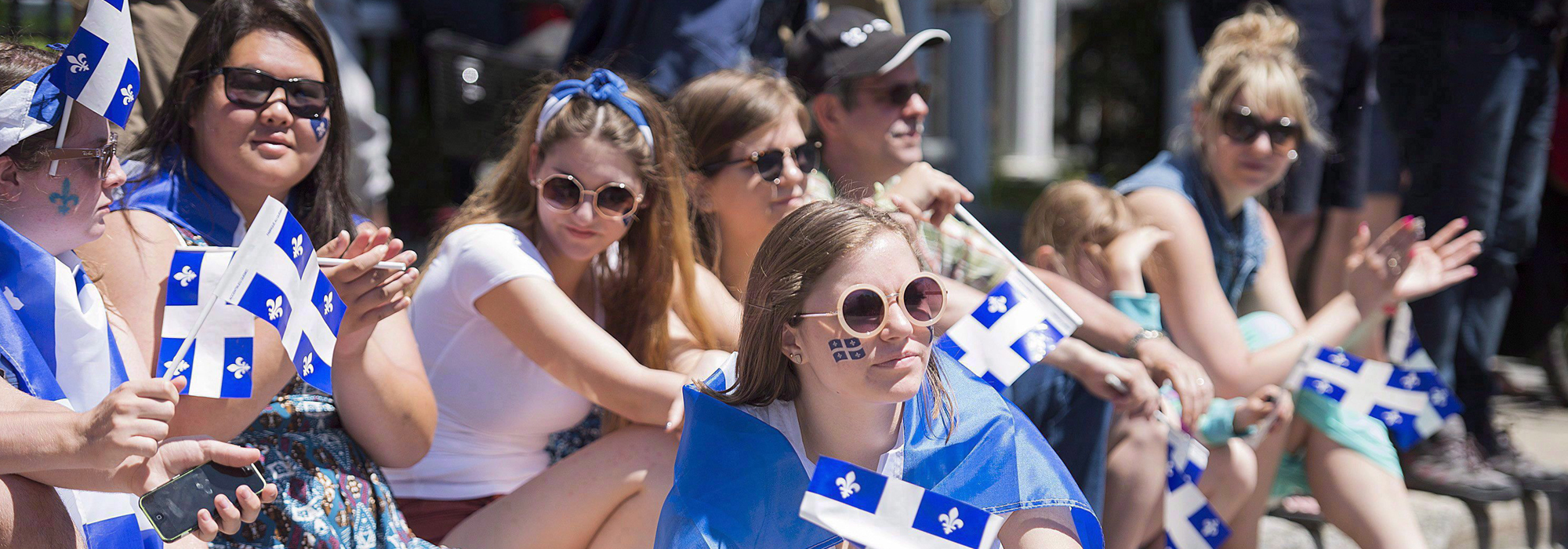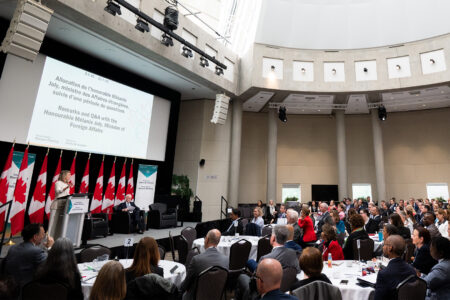
Our world is experiencing the largest wave of urban growth in human history. The United Nations Population Fund estimates that by 2030, over 5 billion people will live in cities and towns. Canada fits within this global trend. Today, over 80 percent of Canadians live in cities. Canada’s urban Indigenous population is growing at almost five times the rate of its non-Indigenous population.
These urban shifts are redefining what it means to be Canadian and sparking a growing public interest in how cities help to define both our history and our future. As more of us live, work and play in our growing or amalgamated metropolitan areas every day, cities have migrated to the centre of our national public policy concerns.
Many of the important challenges facing Canada today play out most acutely in our cities –infrastructure, transportation, health care, multiculturalism, environmental sustainability, reconciliation between Indigenous and non-Indigenous peoples, social and economic inequality, housing, employment, immigration and settlement.
Meanwhile, Canada’s cities have emerged as sites of cultural exchange, hubs of economic interaction, and incubators for innovative policy and social change. They are sites of contact, creativity and tension.
But whose narratives, needs, priorities and experiences are currently reflected in our policies and the infrastructure we build in our cities? Who is missing from the table? City administrators, engineers, planners and managers have long displayed a tendency to engage primarily with older age cohorts, particularly those who are taxpayers and homeowners, financially and socially secure, able bodied and easily reached by phone or mail.
Younger people haven’t always been seen as a priority group when it comes to traditional consultations. Children and teens aren’t (yet) taxpayers or homeowners, and are typically viewed as dependents. Young adults in their 20s and early 30s are often transient as they move around for school and work. They’re less likely to be homeowners, have a landline or respond to lengthy online questionnaires.
For cities to work, youth must be around the table as equal partners in the process. The key to unlocking Canada’s urban potential in this new century isn’t through a top-down policy approach to city planning and population management. There is a need to disrupt traditional consultation processes that ignore or delegitimize the knowledge that youth bring to the conversation.
Examples from Montreal
In many ways, the province of Quebec has led the way on social policy related to healthy families and young people. It has been seen as a leader in age-friendly city initiatives, and Quebec City hosted the 2013 World Health Organization International Conference on Age Friendly Cities. Today, there is a growing interest in how to make Montreal a more child and youth friendly city.
Over the last few years, Montreal has begun experiencing a period of civic revitalization. Creative partnerships between citizen-led groups, civic leaders, artists, urban planners, social economists, philanthropists, community organizations, businesses and government bodies are leading to the development of social policy and targeted initiatives to breathe new life into the city.
Montreal has a young vibe, bolstered by a strong network of universities and other post-secondary institutions, and it has thriving arts, cultural and technology sectors. Rent is still cheaper here than other major Canadian cities. Youth – particularly the so-called and much maligned Millennials and Generation Z – deserve much credit for Montreal’s burgeoning reputation as a fertile startup city for young entrepreneurs, particularly in the creative economy, the sharing economy and in the innovation accelerator and start up culture. Montreal leads in the fields of information technologies and smart city initiatives.
Of course, there’s a flip side. Montreal struggles to retain its young people, including its university graduates. This trend fits into a bigger picture in which the city (and the province as a whole) is hampered by a low birth rate, low immigrant retention and significant interprovincial outflow. Many studies, including a 2016 socio-economic study by the Organization for Economic Cooperation and Development (OECD), a 2014 study by the BMO and Boston Consulting Group and another 2014 by the Conference Board of Canada, Institut du Québec and HEC Montreal indicate that Montreal shows signs of growth, but continues to lag behind most comparable North American cities. (I’ve also written about this at length for the Montreal Gazette. You can find the two latest articles here and here.)
The takeaway from this is two-fold: First, we need to valorize and maximize the contributions of younger generations to building our urban future. Second, we need to foster the kind of community engagement that encourages the making, creating and risk-taking that young people do.
This starts with an acknowledgement that young people imagine their environments differently. What if instead of ignoring or delegitimizing their ideas and experiences we amplified them? What if we started actively considering how our youngest citizens – children – imagine the city in a way that could conceivably impact policy and the built environment? What would that look like?
Lessons from Lac Mégantic
On a warm July night in 2013, the town of Lac Mégantic, in the Eastern Townships region of the province, was struck by one of the most devastating rail disasters in Canadian history. Just after 1 a.m., an unattended oil tanker rolled down a bank and derailed in the centre of town, triggering a series of fires and explosions that killed 47 people and destroyed the downtown core.
Over the following days and months, the community came together to pick up the pieces. The town council called on a Montreal based organization, Conversité, to engage in a public consultation to reinvent the city. Finding that there weren’t a lot of children present at the public assemblies, Conversité approached teachers in elementary schools and were able to talk to children under the age of eight. With crayons and paper in hand, the children were asked to draw their ideal downtown.
« Of course, » project manager Gabrielle Immarigeon explained to me, « kids have no idea about things like budgets, limits or zoning. So they drew candy stores and petting zoos and toy stores. Our job was to read between the lines. The message we got was that these kids wanted a downtown that was fun and soft and comfortable. »
City kids
For over 15 years, POP Montreal has animated the city with a five-day festival of music and art. The organizers have recently incorporated a youth-focused component called Kids POP, in which Montreal’s Mile End district is transformed into an urban playground of obstacle courses, musical performances and instrument-making, mural-painting, arts and crafting, print-making and silkscreen workshops, and live music karaoke. The activities are free and accessible to people of any age.
“Sesame Street got it right,” Kids POP curator Gen Heistek explained to me. “But most of the images and representations we see in books or on TV don’t match the actual experiences of young people who live in the city.” We often see images featuring large, single-family homes with backyards and driveways, or kids at the farm, in wide-open spaces, surrounded by cows and chickens. “But where are the pigeons? Where are the balconies, apartment blocks and bicycles?”
One installation this year included an interactive space where kids were encouraged to build their own dream version of the city. Organizers set out tables stacked to overflowing with tools and material: tape, buttons, pipe-cleaners, markers and pencils, cups, stickers, sparkles, tinfoil, feathers, you name it. Kids of all ages collaborated to build a cityscape made to measure: Shoeboxes with splashy paintings on the side became apartment blocks, streets made of fabric and glitter glue were populated with popsicle stick bicycles, trees and flowers made of toilet paper rolls, buttons and feathers, little mini pipe-cleaner people. Like the children in Lac-Mégantic, kids design a built environment that is playful, colorful, sensory and tactile.
Young people don’t need to be told who they are, how they should “be” in the city or the conditions of their lives. They already know.
“Is it good for kids?”
In May, I flew from Montreal to Houston to attend the Next City Vanguard Conference hosted by the Kinder Institute for Urban Research at Rice University. The Vanguard is an annual experiential gathering that brings together a top 40 under 40 young global urbanists working to improve cities across sectors. As part of the committee that launched a successful bid to host the 2017 conference in Montreal (to hook in with celebrations for Montreal’s 375th, Canada’s 150th and the 50th anniversary of Expo ’67), I was there to see how the conference was pulled off in real time.
On the second day, I attended an early morning panel focused on urban planning and its role in universal health care. One of the panellists, David McGhee, who is a program officer (now program director) with the US-based Skillman Foundation’s youth development portfolio, said something that gave me pause. Any attempt, he argued, to solve complex urban problems must begin with one simple question: “Is it good for kids?”
McGhee was talking about his community work in Flint, Michigan, in the wake of the tainted water crisis. But this premise stuck out for me. It is easily one of the most applicable starting points for any urban policy initiative ranging from public health, economics, education, architecture, art and design, heritage conservation, green infrastructure, transportation, community development, information technology and beyond.
A child and youth friendly city is a healthy city, a safe city, an accessible city, an engaging and an interactive city. It’s an equitable, democratic and just city. It’s a fun and playful city. Months later, in a conversation with Félix-Antoine Joli-Coeur, executive director of Amplifier Montreal – a movement launched by partners to transform Montreal into a more inclusive, resilient, and innovative city – he summarized the sentiment: « a child friendly city is a city that’s friendly for everyone.”
Canada’s future is tied to the health and success of our cities, and youth are the key to unlocking Canada’s urban potential in this new century.
Photo: Members of the the crowd watch the annual St-Jean-Baptiste Day parade in Montreal, Wednesday, June 24, 2015. The Canadian Press/Graham Hughes
Twitter photo: Canadian band Dragonette performing in Montreal in 2013. Benoit Daoust / Shutterstock.com
This article is part of the Public Policy and Young Canadians special feature.
Do you have something to say about the article you just read? Be part of the Policy Options discussion, and send in your own submission. Here is a link on how to do it. | Souhaitez-vous réagir à cet article ? Joignez-vous aux débats d’Options politiques et soumettez-nous votre texte en suivant ces directives.






